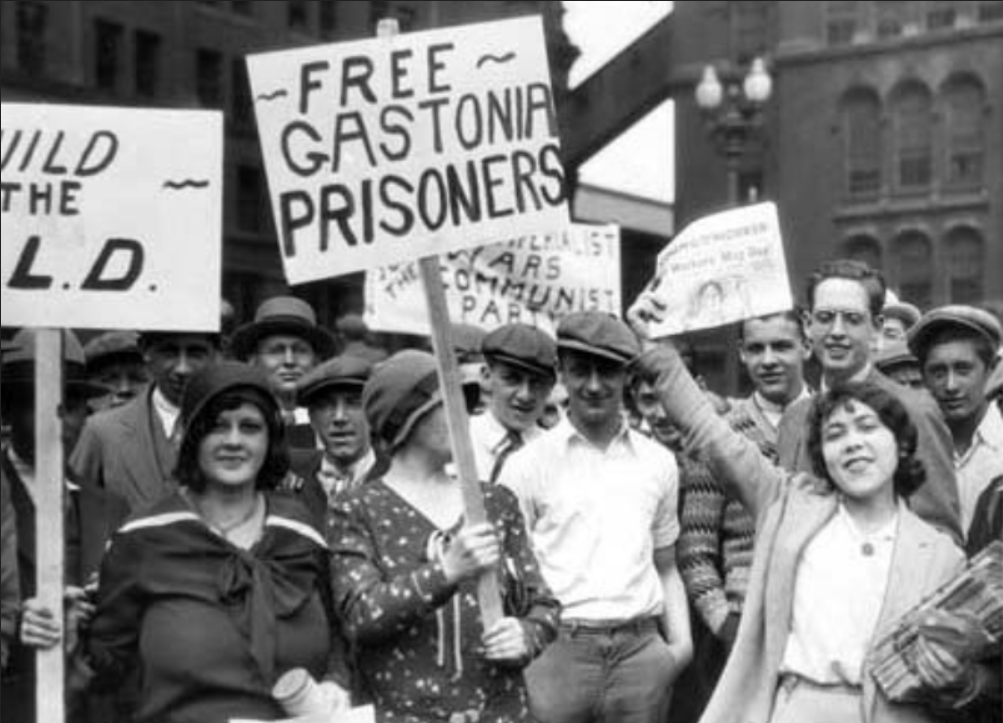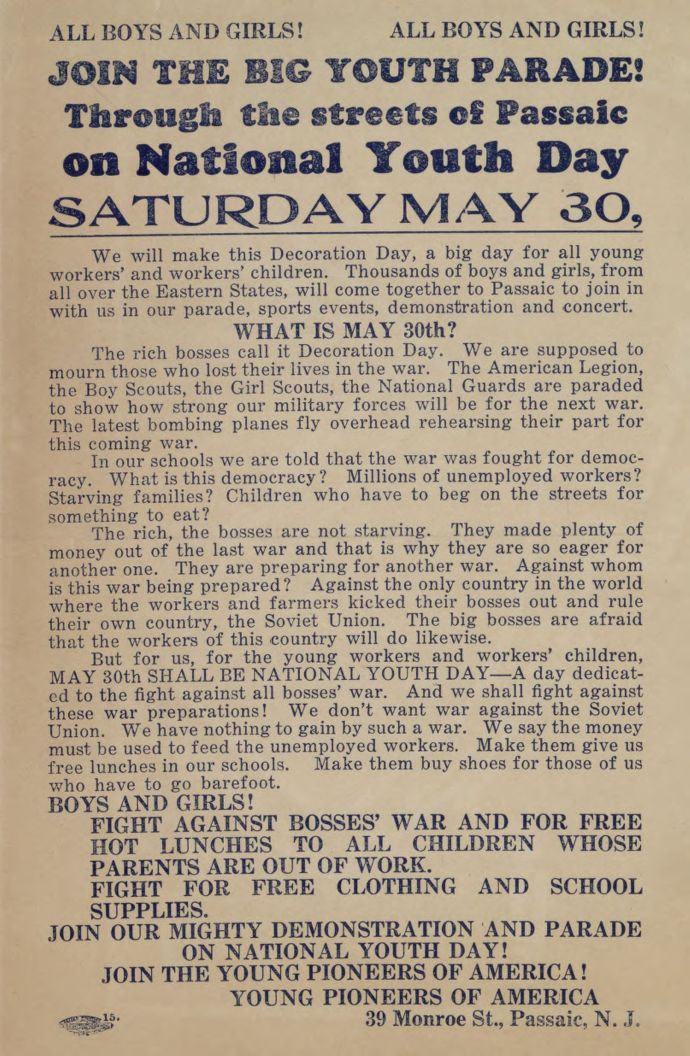‘The Party Leaflet–Its Policy and Construction’ from Party Organizer (C.P.U.S.A. Internal Bulletin). Vol. 4 No. 5. June, 1931.
THE Party leaflet is not a mechanically constructed advertisement for which a definite formula can be applied, but there are some fundamental principles which, if understood, can guide a functionary to more quickly It is only with master the art of leaflet construction. this view that the following is submitted.
A leaflet issued by the Communist Party to the masses of workers (whether a general leaflet or one issued to some specific section of the working class, such as workers in a certain shop or industry, unemployed, Negro, women, military, etc.) is a political document in which the Party analyzes a given situation and tells the workers how best to take advantage of the opportunity to fight, whether for some gains or to prevent losses. Because the leaflet is a political document it must clearly and correctly present the line of the Party.
Those comrades active in the drafting and formulation of leaflets should keep posted on all events of a local, national, and international character. These comrades must make a regular habit of studying Marxist-Leninist works, the Communist, Inprecorr, and especially the Daily Worker. The “Daily” is not merely a newspaper for the masses of workers, but as the central organ of our Party, it must be utilized by every functionary as a source of information and political guidance. The Party policy on all subjects pertaining to the working class appears every day in the editorial columns on the first page of the “Daily.” A systematic study of these editorials will clarify the problems before our Party, and the functionary will so learn to draw the proper conclusions from the various local problems arising continuously. Too often we lose wonderful opportunities for struggle because our comrades fail to understand their significance, and how to take advantage of them.
The mimeographed leaflet is the most popular form used by the Party because of its convenience and relatively low cost. While a printed leaflet may sometimes be rather lengthy (tho it should be avoided whenever possible), the mimeographed leaflet because of its character should be short and snappy. (Sometimes it may be necessary to issue a special mimeographed leaflet dealing more thoroughly and at greater length with some subject, but this article is confined to the type of leaflet generally used). The mimeographed leaflet should be divided into 3 parts (sections):
1. The main issue (the present problem, wage cut, impending layoff, etc.)
2. Linking up the present issue with the problem on a broader scale (developing a campaign, etc.)
3. The program of action (advising workers to join some organization of struggle, to support a campaign, to strike or demonstrate, etc.)
The formulation of the leaflet is an important consideration.
The leaflet should be addressed to the group of workers it is issued to. The salutation of the leaflet is not a main issue. Typed, or neatly written with a stylus, it should not (in most cases) be outstanding.
The three parts of the leaflet should have appropriate headlines attracting the attention of the workers to the purpose of the leaflet. The headlines should be carefully and neatly written with a stylus, using different styles of printing for the various headlines to lend color to it. The formulation of the paragraphs themselves is important. Care must be exercised in the choice of words, avoiding high falutin’ language, using short, clear sentences.
A paragraph underscored to give it prominence, or the use of caps; are all good methods of avoiding monotony. The paragraph must have continuity. A leaflet must stick to the subject. Rambling from the need for toilets in a certain shop, to the Chinese revolution is impermissible. Slogans must be chosen carefully. Abstract slogans must at all times be avoided. A leaflet loses its value if it is full of slogans, even good ones, if they are meaningless to the workers. The slogans must be closely related and must form a logical conclusion to the text of the leaflet.
These directives should give the functionary (especially those who have not been involved in practical Agitprop work) a basis to start on, but it is only the experiences thru persistent work that will teach us this work.
The Party Organizer was the internal bulletin of the Communist Party published by its Central Committee beginning in 1927. First published irregularly, than bi-monthly, and then monthly, the Organizer was primarily meant for the Party’s unit, district, and shop organizers. The Organizer offers a much different view of the CP than the Daily Worker, including a much higher proportion of women writers than almost any other CP publication. Its pages are often full of the mundane problems of Party organizing, complaints about resources, debates over policy and personalities, as well as official numbers and information on Party campaigns, locals, organizations, and periodicals making the Party Organizer an important resource for the study and understanding of the Party in its most important years.
PDF of issue (large file, contains multiple volumes): https://files.libcom.org/files/Party%20Organizer%204.pdf

